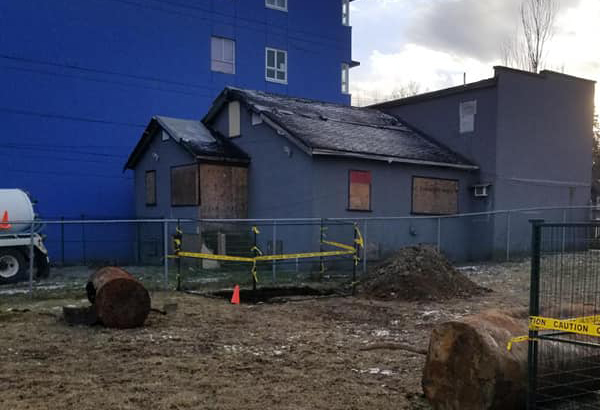 Fully Licensed and Insured
Fully Licensed and Insured Request an Oil Tank Scan
Request an Oil Tank Scan Request a Free Estimate
Request a Free Estimate

Is an abandoned oil tank ever truly as good as gone? The answer for most homeowners is, unfortunately, no.
The discovery of a forgotten or abandoned oil tank on one’s property is never a great moment. Most homeowners have heard the stories surrounding costly oil tank removal and soil remediation, so learning that your property is sitting on an oil tank is generally unwelcome news.
Once the reality of the situation has set in, the next step for homeowners is figuring out what to do with the oil tank.
When oil was phased out as a heating source, people weren’t given very clear instructions on what to do with all these underground oil tanks. Some businesses and homeowners chose to do nothing, essentially forgetting the oil tanks were there, while others chose oil tank abandonment.
Oil tank abandonment is a process of decommissioning oil tanks. After an inspection to ensure the structural stability of the tank, any reaming oil is removed, the tank is cleaned, and some sort of backfill material is used to fill the empty tank to keep it from collapsing.
Historically, oil tanks were abandoned rather than removed because abandonment is less expensive than removal. However, oil tank abandonment comes with its share of risks, including potential water and soil contamination and financial liability concerns if leaking oil affects neighbouring properties. Given the risks, few communities allow for oil tank abandonment anymore unless there are very specific reasons why the oil tank cannot be safely removed, like when a portion of the tank is located underneath the home.
Most cities now require oil tank removal for previously abandoned tanks. The issue is that when oil tanks were first decommissioned, there were few abandonment guidelines in place, and no inspections were performed. Without a strict set of regulations, standards for soil contamination sampling, and a system for certifying abandonment carried out by a qualified professional, it is almost impossible to know that an oil tank was decommissioned safely.
Frequently, oil tank abandonment was carried out by contractors of other tradespeople unfamiliar with the correct abandonment process, leading to issues such as:
Because of the challenges in proving a previously abandoned tank was decommissioned correctly, most cities require the removal of abandoned oil tanks, provided it can be done safely.
By-laws aside, there are other advantages to removing an abandoned oil tank from your property. Firstly, oil tank removal ensures that the oil tank is gone for good. This has several important implications because even if you can demonstrate that your oil tank was abandoned correctly, some mortgage lenders and insurance companies will still not approve of having an abandoned oil tank on a property, which can complicate selling your home, applying for mortgage renewal, or obtaining insurance coverage.
Secondly, oil tank removal provides reassurance that the environmental and financial effects of an improperly decommissioned oil tank cannot come back to haunt you. The costs of remediating soil contaminated by leaking oil far exceed the cost of standard oil tank removal.
Lastly, removing an abandoned oil tank ensures the safety of your property. Even years after being decommissioned, underground oil tanks carry the risk of collapsing or leaking harmful vapors into the air.